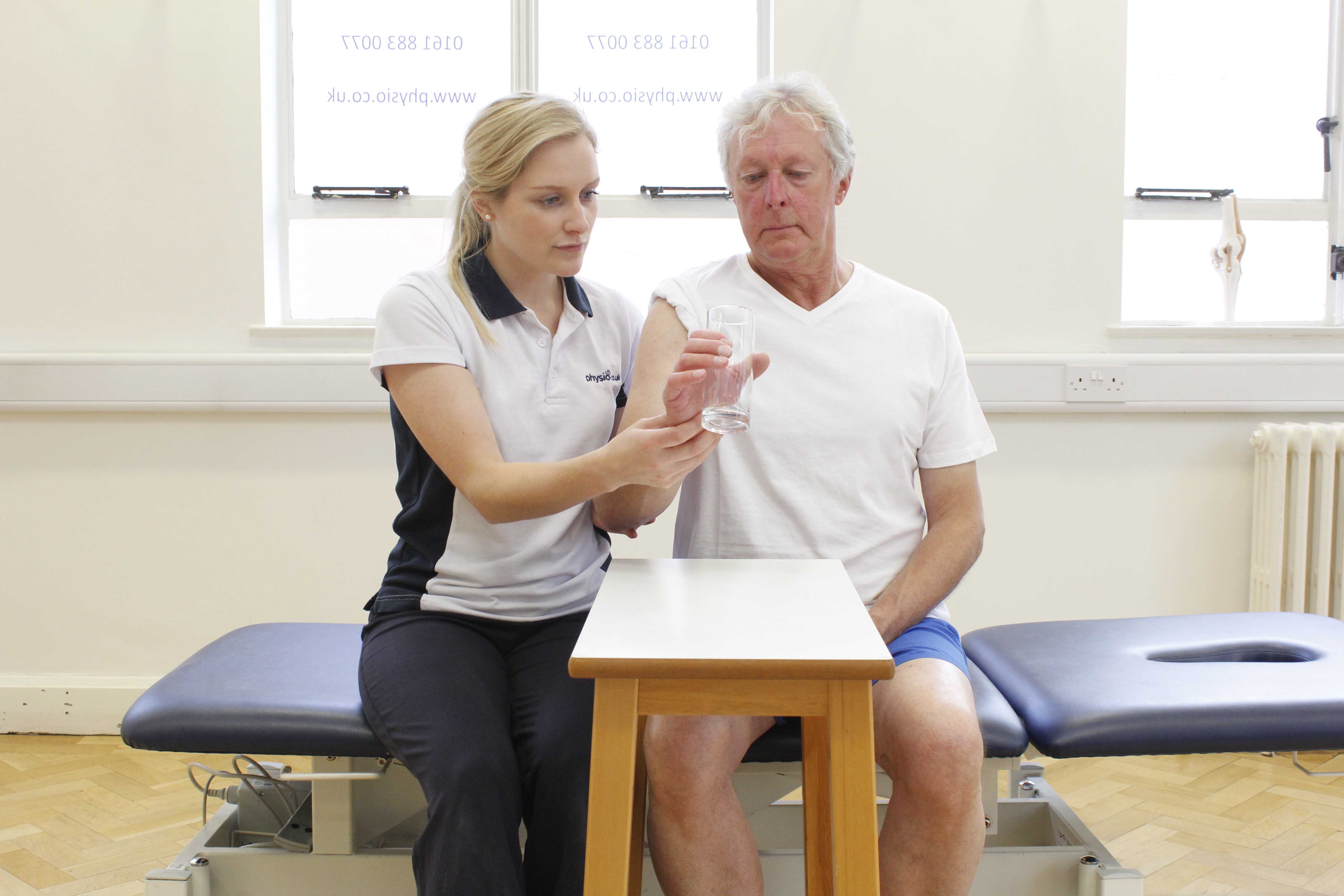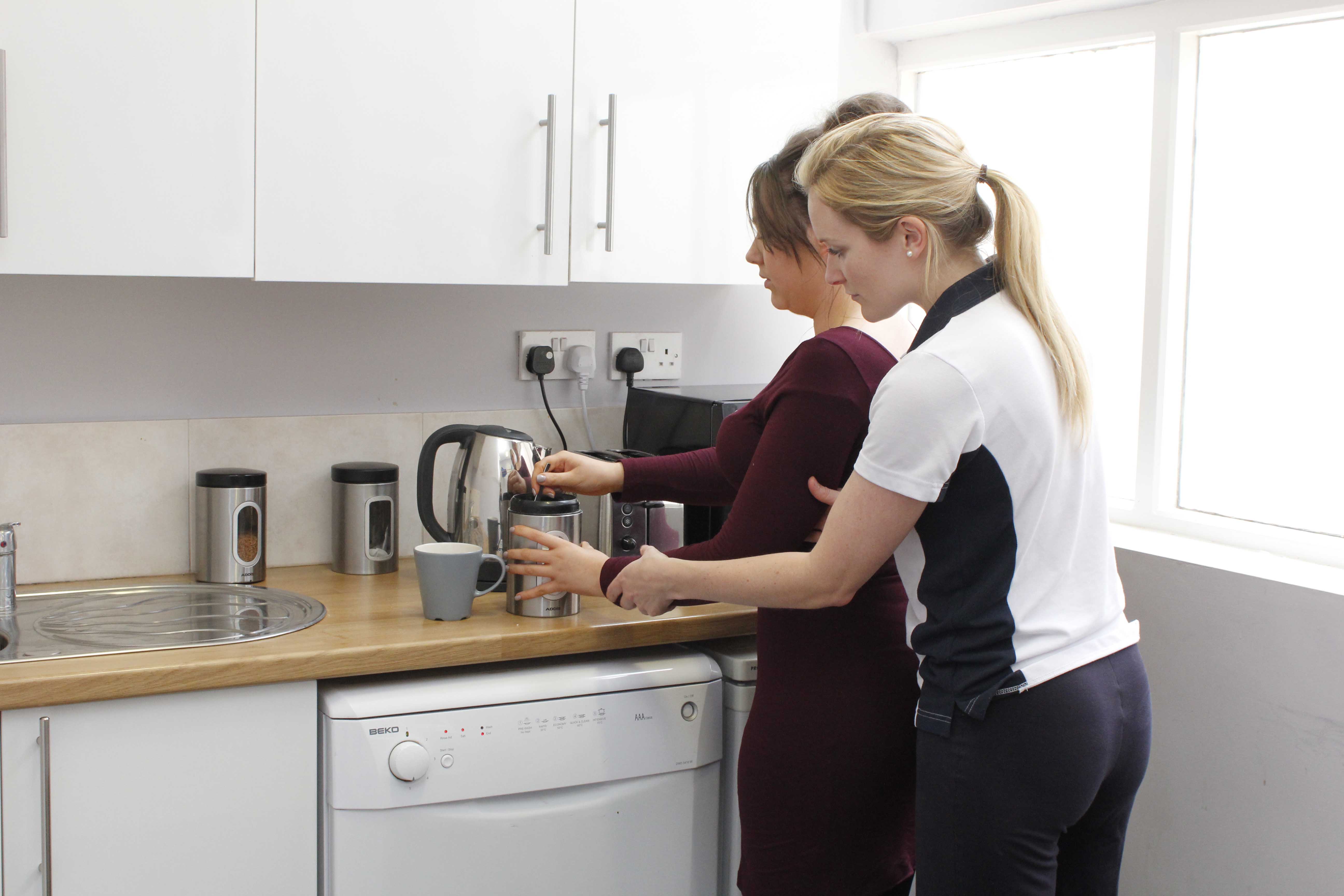ORIF Wrist
ORIF of the wrist or open reduction and internal fixation is a surgical procedure used to repair a broken or fractured wrist bones. Open reductionaims to realign and set the fractured bones and internal fixation refers to the fixation of screws and/or plates to enable or facilitate healing. Physiotherapy after ORIF of the wrist is important to allow full recovery of the wrist joint.
A broken wrist or wrist fracture commonly occurs as a result of a fall or injury. The radial bone is the most common wrist bone that is injured and can be caused by a fall on an outstretched hand. Other wrist fractures include fractures to the ulnar bone, the carpal bones or a combination of each. Fractures at the wrist are associated with symptoms such as pain and tenderness of the arm, wrist and hand, swelling, bruising, deformity, the inability to grip with the hand as well as difficulty moving the wrist.
Fractures of the wrist can either be displaced when the bone is out of position, or non-displaced when the bone is fractured but remains in its correct alignment. Treatment of a wrist fracture is decided depending on the severity of the injury. ORIF of the wrist is required if the bone is fractured and out of its correct position (displaced). If the bone has been broken but remains in its correct position (non-displaced) then immobilisation using a plaster of Paris cast or a splint is used and then followed by an appropriate physiotherapy programme.
ORIF surgery of the wrist is open surgery and is performed under general anaesthesia. During ORIF of the wrist the surgeon makes an incision over the fractured bone. The fractured bone is then realigned into its correct position (open reduction). The bone is then held in place using pins, screws, wires or a combination of each (internal fixation). The wound is then closed up using stitches or sutures. In most cases the internal screws or plates remain in the wrist permanently or in some cases they may be removed at a later date. It is essential to undergo ORIF surgery of the wrist after suffering a displaced fracture as this will eliminate deformation, reduce pain, aid healing process and help return function in the wrist and hand.
A physiotherapy programme is crucial once the bones have healed sufficiently to maximise the success of the surgery, prevent the likelihood of problems in the future and to help guarantee the return of full or near to full function in the wrist and hand after a wrist fracture.
 Above: functional wrist exercises supervised by experienced MSK physiotherapist
Above: functional wrist exercises supervised by experienced MSK physiotherapistSymptoms after ORIF of the wrist
Once you have undergone ORIF wrist surgery, your wrist will be immobilised using a cast or a splint for up to three weeks. You may initially experience some numbness before the anaesthesia wears off fully. You will feel some pain post surgery which you will be given pain killers for. There will be considerable swelling in the immediate period after your ORIF wrist surgery and you will be advised to keep your wrist elevated above heart level as much as possible. You can use pillows to keep your wrist elevated at rest and you will be provided with a sling to provide essential support and protection when you’re out and about. Additionally, you will be advised to keep your fingers moving as much as possible when you have your cast on to maintain a good circulation, mobility and aid healing. Once your cast has been removed you will experience weakness as well as reduced range of movement, mobility and function in your affected wrist, hand and forearm. Physiotherapy should begin as soon as possible once your cast has been removed, although an intense physiotherapy programme should wait until the fracture site has healed sufficiently.
 Above: Functional wrist exercises assisted by specialist physiotherapist
Above: Functional wrist exercises assisted by specialist physiotherapistPhysiotherapy after ORIF of the wrist
Physiotherapy is necessary as soon as possible once the plaster cast has been removed after your ORIF wrist surgery. A comprehensive physiotherapy programme with Physio.co.uk will help reduce pain, reduce stiffness, improve mobility, improve strength and increase the range of movement in your wrist. Physio.co.uk will help you achieve the full of near to full return of function in your wrist. Full rehabilitation of your wrist after ORIF surgery can take 3 to 6 months depending on the success of your surgery, the severity of your wrist fracture as well as the initial condition of your wrist. Physio.co.uk offers a personal programme with goals that include:
- Restore a pain free wrist
- Restore full range of movement (ROM)
- Improve muscle strength
- Improve muscle flexibility
- Improve cardiovascular fitness and muscle endurance
- Re-establish function and independence
0-3 weeks
In the initial few weeks after your ORIF wrist surgery, you will be wearing a wrist cast and a sling. Your physiotherapy at this stage will mainly consist of pain modalities to control for any pain you will be experiencing. Rest, ice, compression and elevation (RICE) is encouraged in the immediate stages of recovery. You will be given advice on ways you can reduce swelling such as elevating you lower arm using pillows etc. You will also be advised to keep your fingers moving to maintain good circulation and mobility. Furthermore, goals of your rehabilitation with Physio.co.uk at this stage will be to ensure that there is full active range of movement in both your shoulder and elbow. Your physiotherapy will include:
- Pain killers (to control pain)
- Elevation (to control swelling)
- Passive (assisted) range of movement exercises for affected arm (elbow and shoulder)
- Active (on your own)range of movement exercises for unaffected arm (wrist, hand, elbow and shoulder)
- Strengthening and range of movement exercises for unaffected arm
4-8 weeks
Once your cast has been removedand the fracture site has healed adequately you can undergo a more intense course of physiotherapy with Physio.co.uk. The goals of your rehabilitation will include controlling pain and swelling, improving range of movement and flexibility along with increasing muscle strength. Additionally goals will be to improve muscle control in your wrist, hand and forearm. Your physiotherapy will include:
- Continuation of modalities for pain and swelling
- Passive (assisted) and active (independent) range of movement exercises
- Gentle strengthening exercises (isometric – hold) for muscles of affected arm (pronator teres, supinator, wrist flexor muscles, wrist extensor muscles, hand and finger muscles)
- Passive (assisted) stretching exercises for muscles of affected arm Range of movement, strengthening and stretching exercises for unaffected arm
- Mobilisation of wrist joints
- Hand grip strengthening exercises
- Wrist, hand and elbow exercises
- Hydrotherapy
9-12 weeks
After two months of rehabilitation with Physio.co.uk, your physiotherapy programme will continue to focus on the progression from previous weeks. The main goals of your physiotherapy programme with Physio.co.uk will aim to minimise pain and improve function in your affected wrist. Rehabilitation will continue to include progressive strengthening exercises to reduce weakness and improve muscle control. At this stage, your physiotherapy will also begin to include activities that will improve your cardiovascular fitness and muscle endurance. Your physiotherapy will include:
- Pain control
- Range of movement exercises for joints of hand, wrist and forearm
- Flexibility exercises
- Passive stretching (assisted) programme-with combined movement
- Strengthening exercises for muscles in affected and unaffected arm (pronator teres, supinator, wrist flexor muscles, wrist extensor muscles, hand and finger muscles)
- Mobilisation of wrist joints
- Hand grip strengthening exercises
- Hydrotherapy
3 months onwards
After three months of successful physiotherapy with Physio.co.uk your rehabilitation will focus on maximising strength and function in your wrist and hand. By this time, you should be experiencing minimal, if any, pain and swelling around the fracture site. You will have seen marked improvements in the range of movement and strength in your affected wrist, hand and forearm. Goals of your physiotherapy will be to continue to include activities that maximise range of movement, strength, muscle endurance, cardiovascular fitness and function in your affected and non affected arms. Physio.co.uk will also include functionally activities that are specific to your everyday living, hobbies or sport.
The success of your recovery after ORIF surgery to your wrist will highly depend on the condition your wrist prior to the operation as well as your commitment to your physiotherapy programme with Physio.co.uk. Recovery may take 3 to 4 months.
Summary
Open Reduction and Internal Fixation (ORIF) of the wrist is a surgical procedure that treats a fractured wrist bone, most commonly the wrist end of the radius bone. A wrist fracture occurs as a result of trauma to the bone and can happen during a fall on an outstretched hand. Fractures can be non displaced (remains in position) or displaced (out of position). If the fracture is non displaced then a conservative approach using immobilisation followed by physiotherapy is appropriate. If the fracture is displaced the ORIFsurgery is required to realign the bone (open reduction) and then hold it in position (internal fixation) using screws or pins to aid healing. Physiotherapy after ORIF surgery of the wrist will maximise the success of the surgery, reduce pain and stiffness, aid the healing process and improve mobility and function in the wrist and hand. Physio.co.uk offers a personal physiotherapy programme that will help you achieve the return of full or near to full function in your arm whilst getting you back to your everyday activities, job, hobby or sport as soon as possible after your wrist fracture. Call Physio.co.uk now on 0330 088 7800 for more information or to book an appointment please contact us.

 0330 088 7800
0330 088 7800

































